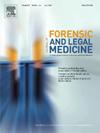Knowledge, attitudes & practices of urgent care providers in Barbados regarding forensic cases and evidence collection
IF 1.2
4区 医学
Q3 MEDICINE, LEGAL
引用次数: 0
Abstract
Background
Emergency room (ER) urgent care professionals (UCPs) are often the first point of contact for cases inclusive of intimate partner violence, blunt trauma, penetrating trauma and sexual assault. These are potential forensic cases which put UCPs in contact with forensic evidence. UCPs care for both victims and perpetrators of a crime. It is important for UCPs to provide healthcare and be able to take actions when they encounter evidence that can be useful in a forensic investigation. In Barbados between 2019 and 2020 there were 36,833 emergency room visits, an average of 20 cases/year (0.05 %) were identified as forensic (1). The purpose of this study was to explore the knowledge, behaviours, and attitudes of UCPs in ERs in Barbados regarding forensic science and evidence in order to put meaningful interventions in place.
Methods
UCPs were recruited from a convenience sample from public and private ERs using a set of inclusion and exclusion criteria. 105 UCPs met the inclusion criteria, they practiced in six ERs. The highest percentage of participants were doctors and nurses. UCPs who met the inclusion criteria were surveyed using a four-part questionnaire on demographics, knowledge, behaviours and attitudes.
Results
The average knowledge score of participants was 68 %. The highest mean knowledge scores were among doctors and nurses. The lowest knowledge score was on “what is forensic evidence”. On behaviours, 13 % accurately evaluated patients as potential forensic cases, 76.5 % of participants answered “never” to use of tamper evident bags and 90.6 % said their ER did not have evidence kits/trolleys, 13.3 % had received courtroom testimony training. Concerning attitudes 39 % of the respondents believed that victims and perpetrators deserve equal care, 68 % believed that victims have a right to refuse care and 67 % believed that forensic evidence was important in their practice.
Conclusion
Participants showed adequate knowledge about what forensic evidence means and how it can be applied to practice. Absence of evidence kits in the ER impacts visibility to UCPs. There is need for training in their use and what their presence implies.
巴巴多斯紧急护理提供者关于法医案件和证据收集的知识、态度和做法
背景急诊室(ER)紧急护理专业人员(ucp)通常是亲密伴侣暴力、钝性创伤、穿透性创伤和性侵犯等案件的第一个接触点。这些都是可能的法医学案件,使ucp接触到法医学证据。ucp既照顾受害者,也照顾犯罪者。对于ucp来说,重要的是提供医疗保健,并能够在遇到可能对法医调查有用的证据时采取行动。在2019年至2020年期间,巴巴多斯有36,833次急诊室就诊,平均每年有20例(0.05%)被确定为法医(1)。本研究的目的是探讨巴巴多斯急诊室ucp在法医学和证据方面的知识、行为和态度,以便实施有意义的干预措施。方法采用一套纳入和排除标准,从公立和私立急诊室的方便样本中招募患者。105名ucp符合纳入标准,他们在6个急诊室实习。参与者中医生和护士的比例最高。对符合纳入标准的ucp进行了人口统计、知识、行为和态度的四部分问卷调查。结果被试的平均知识得分为68%。平均知识得分最高的是医生和护士。知识得分最低的是“什么是法医证据”。在行为方面,13%的参与者准确地将患者评估为潜在的法医案件,76.5%的参与者回答“从未”使用过篡改证据袋,90.6%的参与者表示他们的急诊室没有证据包/手推车,13.3%的人接受过法庭证词培训。关于态度,39%的答复者认为受害者和肇事者应该得到平等的照顾,68%的人认为受害者有权拒绝照顾,67%的人认为法医证据在他们的实践中很重要。结论学员对法医学证据的意义及其在实践中的应用有充分的了解。急诊室缺乏证据包影响了ucp的可见性。需要对它们的使用以及它们的存在意味着什么进行培训。
本文章由计算机程序翻译,如有差异,请以英文原文为准。
求助全文
约1分钟内获得全文
求助全文
来源期刊

Journal of forensic and legal medicine
MEDICINE, LEGAL-
CiteScore
2.70
自引率
6.70%
发文量
106
审稿时长
57 days
期刊介绍:
The Journal of Forensic and Legal Medicine publishes topical articles on aspects of forensic and legal medicine. Specifically the Journal supports research that explores the medical principles of care and forensic assessment of individuals, whether adult or child, in contact with the judicial system. It is a fully peer-review hybrid journal with a broad international perspective.
The Journal accepts submissions of original research, review articles, and pertinent case studies, editorials, and commentaries in relevant areas of Forensic and Legal Medicine, Context of Practice, and Education and Training.
The Journal adheres to strict publication ethical guidelines, and actively supports a culture of inclusive and representative publication.
 求助内容:
求助内容: 应助结果提醒方式:
应助结果提醒方式:


